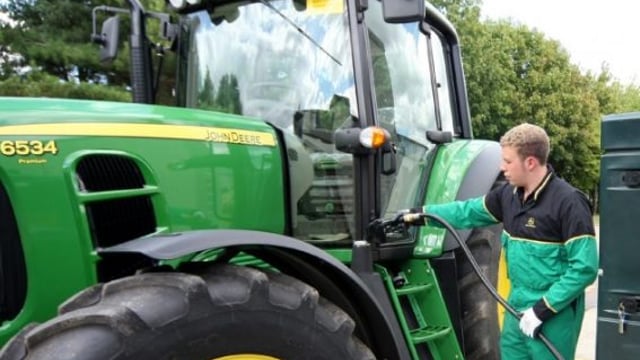10 things to check on your sprayer before you have it tested
Under the Sustainable Use Directive (SUD) all boom sprayers greater than 3m and all blast and orchard sprayers must be tested at least once by November 26, 2016.
Testing is done by a registered Inspector of Pesticide Application Equipment and a list of these inspectors can be found on the Department’s website.
New equipment needs to be inspected at least once within a period of five years after purchase and the interval between inspections must not exceed five years until 2020 and must not exceed three years thereafter, according to the Department.
Ahead of testing, sprayers must meet certain pre-test criteria and these criteria need to be signed-off on in order for the test to proceed:
- The PTO is fully guarded.
- The power unit and sprayer are connected up and ready for test.
- The sprayer is completely clean, both inside and out including filters and filter inserts.
- The sprayer has an adequate supply of clean water on arrival.
- There is an appropriate hard standing area to test the sprayer with clean water.
- The sprayer is in a safe general condition.
There also needs to be acceptance to dispose of the water on-site i.e. only clean water will be exiting the machine.
The Department has outlined 10 elements that are examined during the sprayer test by the inspector:
1.PTO
All guards must be in place on the PTO.
2.Pump
The sprayer’s pump must have no leakages.
3.Agitation
Visible agitation at maximum working pressure with largest nozzles mounted will be tested.
4.Tank
The inspector will check that there are no leakages in the tank and they will also check its strainer, pressure compensation, level indicator and emptying mechanism.
5.Measuring systems/ Controls
The sprayers pressure gauge, its readability, marking, diameter, accuracy, steadiness of pointer, will be examined.
6.Pipes and hoses
No leakages, abrasions, kinks or bends should be on the pipes and hoses for the test.
7.Filters
Ensure that all in-line filters and, where appropriate, nozzle filters are clean for the inspection.
8.Spray booms
The stability, straightness, automatic resetting, nozzle spacing, section control of the spray booms will be tested.
9.Nozzles
Ensure that all nozzles are identical and that there is no dripping five seconds after turning off the sprayer.
10.Pressure / Flow rate
The inspector will test the boom section pressures / nozzle flow rates of the sprayer.





